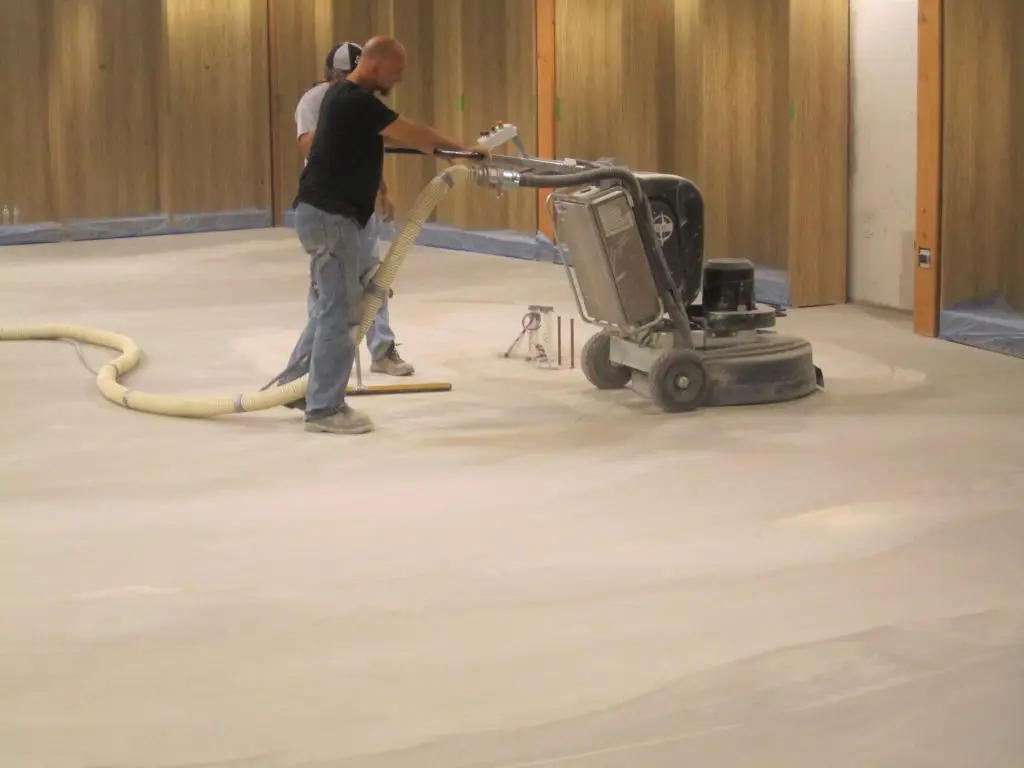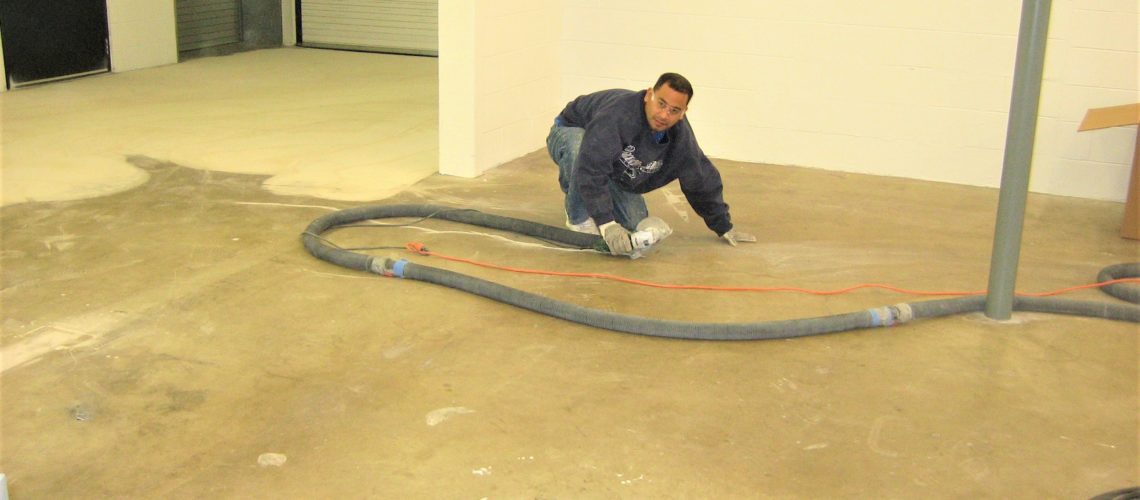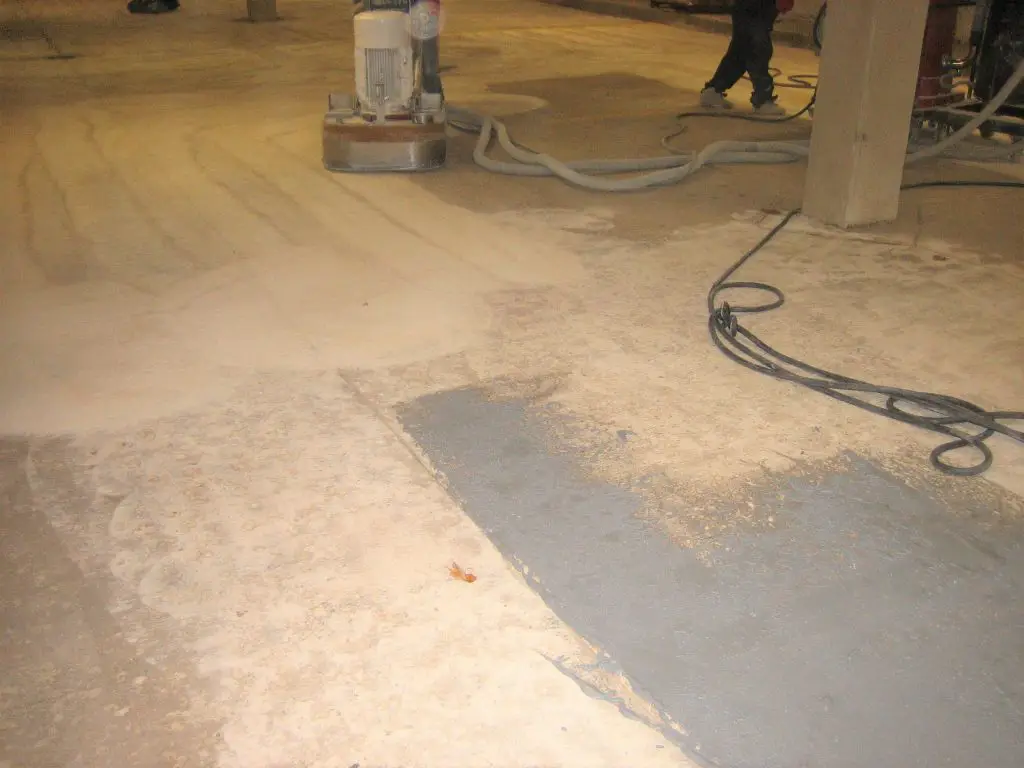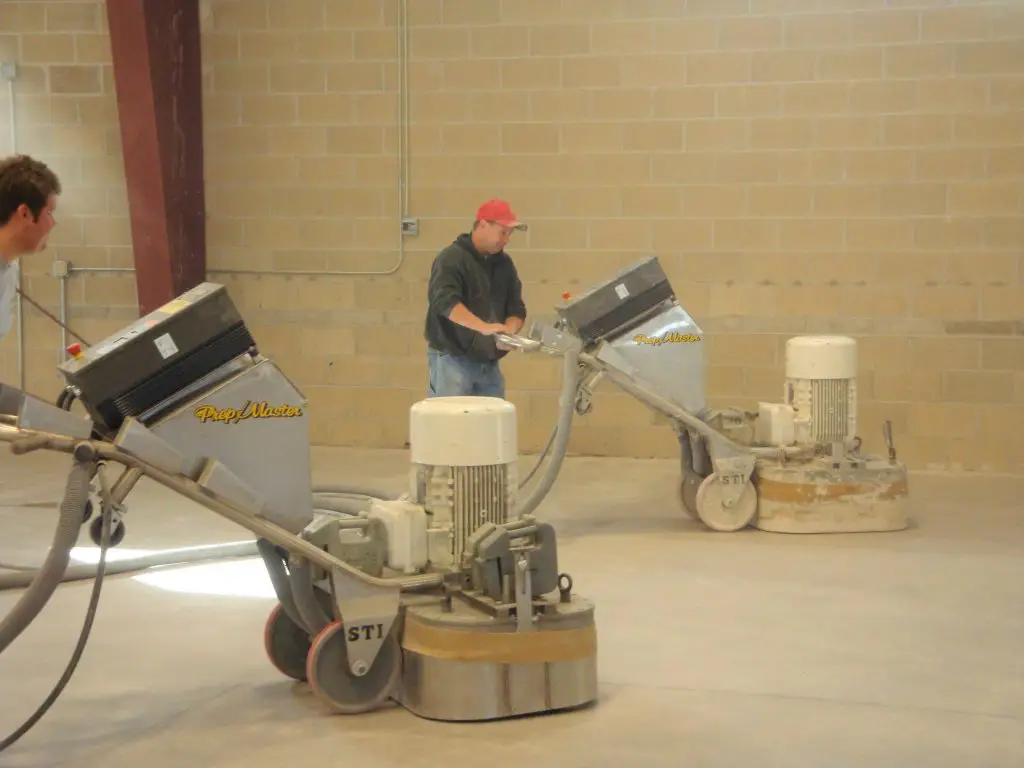How to Prep Concrete for Epoxy or Urethane Coatings
General Instructions for Surface Preparation of Concrete Substrates for Application of a Polymer Floor Coating or Overlay System
There are many factors that can affect the adhesion and bonding capabilities of an epoxy floor coating system to the substrate. In order to achieve optimum adhesion, the substrate MUST be clean and prepared properly.
Therefore, it is absolutely necessary to check the conditions of the substrate in order to correctly identify the proper and correct method of preparation. In many instances, it is necessary and is always advisable to field test the suitability of the substrate for adhesion prior to the actual installation. At ThermalChem, we promise to provide the best resources for your epoxy flooring. Read to find out more about prepping concrete for a urethane coating.
Related: Cleaning Your Epoxy Floor
What to Check For Before Application
In general, the following conditions should be checked and considered:
Contaminants
Newly placed Portland cement concrete is designed to develop its full design strength typically in 28 days, at which time a polymer system can be applied. A light steel troweled finish produced with minimal surface working is most desirable. Existing concrete should be structurally sound and void of and detrimental materials and any surface contaminants.
Unstable Ground
Unsound concrete, typically found as cracks, delaminations or eroded joints, must be repaired or replaced. DO NOT apply a polymer system over any concrete modified topping, underlayment system, or patches unless otherwise approved by the manufacturer.
Unwanted Compounds and Agents
The presence of compounds or agents that have been applied to the surface of the concrete to aid in the curing process may function as a bond breaker if not properly removed. Most curing agents are based on silicones, hydrocarbon oils, sodium silicates or paraffin that can impede the adhesion of a polymer system.
Always take caution with new construction projects, and it is always best to assume that the concrete has been cured with a compound that is incompatible with proper polymer adhesion. Even if an approved method of concrete cure was originally specified, the surface should be tested and cleaned as appropriate.
Laitance
Laitance is the top layer of concrete, consisting of cement, water and fine aggregates, and it may vary in thickness from 0.01″ to 0.1″ depending on several factors such as overworking the placed concrete or by excessive vibrating. Laitance, regardless of thickness, can create a weak surface layer that is insufficient for a proper bond, and it must be removed in order to achieve optimum adhesion to the actual concrete substrate.
Moisture
Moisture in the form of vapor or liquid, can be the cause of adhesion failure and/or blistering at the bond line. As liquid, water can move through the concrete slab by means of channels such as cracks, honeycombs or similar voids, or even expansion and control joints. To achieve proper adhesion of the polymer system, repairs must be made to eliminate this water. Moisture in the form of a vapor can travel through a concrete slab that has no protective vapor barrier between the soil and underside of the slab, or has an existing vapor barrier that has become damaged.
Vapors may also be transmitted through a porous slab where a substantial variation in humidity or temperature, below and above the surface of the slab, exists simultaneously. A typical concrete slab retains 3 to 5% of the migrating moisture that is always present, and generally will not effect adhesion, however, excessive amounts of moisture vapor are of critical concern. To determine if the amount of moisture vapor being emitted from the concrete is at an acceptable level for achieving adhesion of the polymer system, various testing devices for measuring the moisture content are available.
pH Values
The pH level of a concrete substrate, whether too high or too low, will also effect the overall system adhesion or bond strength. The ideal pH value for applying a polymer system is 7, although 6.5 to 9.9 is acceptable and is necessary for obtaining optimum adhesion. When the pH level is 10 or higher, acid etching is required, and when the pH value falls below 6.5, a caustic etch will be required.
Surface Contaminants
These include a variety of foreign compounds which can penetrate into the concrete surface and can include curing compounds, free form release agents, surface hardeners, greases, oils, food by-products, chemicals, previously applied coatings or simply dust and dirt. Any of these contaminants which are present MUST be removed so they will not impede or interfere with the ultimate bond of the polymer system to the concrete substrate.
Carbonation
Carbonation in concrete is the result of carbon dioxide in the air reacting with Calcium Hydroxide in the presence of moisture. Carbonation is an on-going process, and over a period of time can cause the surface to chalk or powder thereby creating a bond breaker which will, ultimately, cause the polymer system to lose adhesion and fail.
Fatty Acids
Fatty acids are saturated monocarboxylic acids that occur naturally in animal, vegetable and many petroleum based products, and they are capable of rapid penetration into the cement portion of the concrete. The infiltration of these acids cause deterioration of the cement molecules resulting in the loss of adhesion to the concrete and produces discoloration on the upper surface area of the concrete which must be removed by means of abrasive blasting or chipping.
The clean looking surface below this discolored layer is nonetheless saturated with fatty acids, and they must be emulsified in order to lift out the contaminants in order to achieve proper adhesion of the polymer system.
Related: Top Seven Reasons to Epoxy Coat Your Garage Floor
 Concrete Prep Methods
Concrete Prep Methods
Grinding
The preferred method for concrete surface preparation in most cases is grinding of all horizontal surfaces. Shot-blasting is another good method for mechanically abrading concrete to receive a coating and is typically recommended for heavier duty epoxy mortars or urethane cement systems. Chemical preparation, although acceptable and commonly used, is a less desirable method of surface preparation due to the potential for insufficient recovery of the cleaning solutions and the surface being left un-abraded. Grinding of a concrete substrate is by far the most effective surface preparation technique available, both from a cost and environmental standpoint.
Grinders come in various sizes from smaller handheld grinders to large walk behind versions that rotate discs (cup wheels) typically embedded with diamonds across the concrete. There are many different types of cup wheels available from more to less aggressive for removing different types of existing floor coverings (mastic, epoxy, urethane, etc). Grinders remove the top layer and opens up the concrete so a floor coating can readily penetrate and get a good mechanical bond. Grinders provide a more even surface as opposed to shot blasting which can leave the surface pitted. They are also good for smoothing out imperfections and high spots in the concrete which cannot be accomplished chemical preparation.
Shotblasting
Shotblasting the top surface can introduce additional concerns that can influence the quality of the finished product. Shotblasting can produce a pattern or rows that can be conspicuously visible, especially when coated with a thin mil system. Although these lines will not affect the performance of the coating, they may be unacceptable to the owner from an appearance standpoint and can add unexpected costs in order to correct the problem.
In addition, shotblasting can also result in opening the pores of the concrete. This allows entrapped air to escape more readily, and with the application of a non-breathable coating or topping, the escaping air can create bubbles or craters in the cured coating. To minimize this potential, it may be necessary to apply an additional base or prime coat, or by applying the base coat when the concrete and air temperatures are the same, reducing out-gassing from the slab.
Scarifiers may be used where thick coating exists or when a very aggressive profile is desired. Scabblers are not recommended except where special circumstances require this type of preparation. The pounding blows delivered by scabblers can cause micro-fissures in concrete that can lead to potential bond failure or delamination under conditions of thermal expansion and/or thermal shock.
While it is important to be aware of these potential problems, keep in mind that abrasive preparation of concrete is still the best means of surface preparation. It is also important to note that abrasive preparation alone may not always be enough, in specific instances BOTH shotblasting and chemical preparation may be necessary.
NOTE: It is always best to contact the manufacturer of the abrasive equipment, the equipment rental dealer, or your surface preparation subcontractor directly for more specific information on the use and capabilities of this type of equipment.
High Pressure Water Blasting
High pressure water blasting is an acceptable method of concrete surface preparation when abrasive blasting is impractical or cannot be used. There is a major difference between washing concrete and preparing concrete to receive an epoxy/urethane coating. When water blasting concrete in preparation for a coating, the pressure washer must be capable of delivering greater pressure than the compressive strength of the concrete being cleaned. Otherwise, the water pressure will not be great enough to remove concrete laitance or produce a profile. In addition to high pressure water blasting, fatty acids or oils must be removed using Thermal-Chem’s ArmorClean.
CAUTION: Care should be exercised not to cut or remove more concrete than necessary using high pressure water blasting methods. Allow the surface to dry thoroughly before proceeding. The use of portable fans will speed up the drying process. Most Thermal-Chem primers and base coats can be applied to moist (but not wet or free-standing water) surfaces. Refer to the individual Product Description Sheet before applying to a moist surface.
Once the Concrete is Properly Prepped
1. Repairs of surface irregularities (including cracks, delamination, deteriorated joints, pitching for drainage, etc.) can be accomplished after the surface preparation is complete, and must be done prior to the application of the polymer system. These repairs should be appropriate and consistent with the system and method of application that will be used. (Refer to the product catalog for additional Thermal-Chem repair products).
NOTE: Depending on the individual project, repairs may need to be done prior to the surface preparation and should be considered before commencing work. Be sure that all demolition is complete and finished prior to the surface preparation.
2. The cove base should be installed prior to the application of the polymer base coat system for best results. (Refer to Cove Base Installation Guide for installation procedures.)
3. It is recommended that, as a general practice, the cleaned concrete should be tested to confirm that the substrate preparation has been performed adequately for obtaining the proper adhesion of a polymer system. The surface should be tested the use of a simple cup adhesion shear test will determine the cleanliness of the concrete substrate for adhesion of epoxy coatings and overlays.

General Precautions
- Wear appropriate eye protection, non-absorbent gloves, and protective clothing when handling any of the chemicals referred to in this INSTALLATION GUIDE. Always read and refer to the supplier’s or manufacturer’s instructions, warning labels, and MSDS sheets carefully prior to using any of these products.
- In case of contact with the skin, by any products provided by Thermal-Chem Corporation, immediately remove the material with soap and water, and follow all written instructions on the appropriate MSDS sheets for exposure of the material to the body and any medical emergency procedures.
- Work areas should be adequately ventilated, especially in low and confined spaces.
- Any or all of the preparation chemicals referred to in this guide may be classified as hazardous waste and should be handled and disposed of within appropriate local, state or federal guidelines. It is the responsibility of the user of such materials to be aware of, and comply with the appropriate regulations for discarding of any waste.
Always refer to specific INSTALLATION GUIDES for proper product recommendations and/or for additional installation guidance.
 Final Thoughts
Final Thoughts
If you are considering an epoxy flooring, make sure you’ve checked the floor using our checklist above. Then, use the guidelines for proper installation. Browse our product line at ThermalChem to find an epoxy flooring solution that is right for you.


 Concrete Prep Methods
Concrete Prep Methods Final Thoughts
Final Thoughts